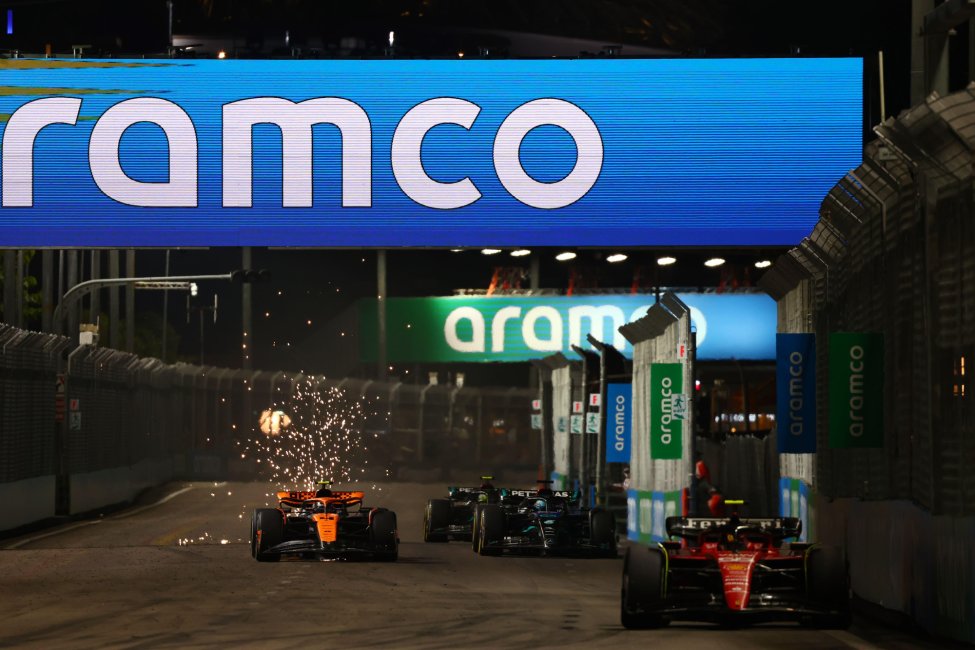Why do F1 cars spark
Sometimes you'll see sparks coming from F1 cars, but why do F1 cars spark, and what causes it? In this article, we'll give you a detailed explanation of why F1 cars spark.

This why F1 cars spark
F1 cars produce sparks due to the contact between the car's floor, specifically the skid blocks or plank and the track surface. Circuits with aggressive kerbs, such as street circuits like Monaco or Singapore, tend to produce more sparks because the cars ride close to the ground and the skid blocks make frequent contact with the surface. Additionally, tracks with abrasive surfaces or uneven sections can also contribute to increased sparking. In contrast, smoother circuits with fewer aggressive kerbs or bumps may result in less sparking.
The material of F1 skid blocks
These skid blocks are made of a very hard and durable material and are designed to wear down gradually throughout a race. When the car is driving at high speeds and generates a lot of downforce, the skid blocks come into contact with the track surface, especially on circuits with aggressive kerbs or bumps. This contact creates friction and generates sparks as the skid blocks scrape along the ground.
Overall, the amount of sparking can vary depending on factors such as track layout, surface conditions, and the design of the skid blocks, but it's typically more noticeable on circuits with tight corners, elevation changes, and high-speed sections.
The correlation between skid block/plank wear and sparks
The correlation between skid block wear and sparks in Formula 1 is closely linked to the regulations governing the minimum thickness of the skid block, also known as the skid plank. The skid block is a mandatory component installed underneath the F1 car to ensure that it maintains a minimum ride height during the race. This plank is made from a very hard and durable material, typically titanium, and is designed to wear down gradually over the course of a race.
As the race progresses, the skid block gradually wears down due to the friction and contact with the track surface, particularly during high-speed cornering and over aggressive kerbs or bumps. As the skid block wears down, it creates sparks when it makes contact with the track surface, especially on circuits with aggressive kerbs or rough surfaces. These sparks are a visual indication that the skid block is in use and that the car is riding close to the ground.
The plank wear disqualification of Lewis Hamilton & Charles Leclerc
After the United States Grand Prix, the skid blocks of the cars of Lewis Hamilton and Charles Leclerc were checked by the stewards. A few hours after the race, the FIA declared that the plank wear was too high as a result of a low floor. This resulted in an unfair aerodynamic advantage, leading to the disqualification of both drivers from the race. Additionally, the home hero Logan Sargeant scored his first point in Formula 1 as a result.
Why do F1 cars have sparks?
Why do F1 cars have a wooden plank?
Why do F1 cars flash red?
Don't miss out on any of the Formula 1 action thanks to this handy 2026 F1 calendar that can be easily loaded into your smartphone or PC.
Download the calender